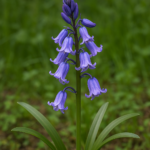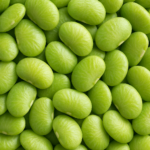
Welcome to our exploration of one of the most stunning and vibrant flowers in the garden: the gladiolus! Known for their tall, elegant spikes adorned with colorful blooms, gladiolus flowers have captured the hearts of gardeners and flower enthusiasts alike. Whether you’re a seasoned horticulturist or a casual admirer, there’s always something new to learn about these fascinating plants. In this blog post, we’ll delve into 25 intriguing facts about gladiolus, from their diverse species and historical significance to their growing requirements and unique characteristics. Join us as we uncover the beauty and complexity of gladiolus, and discover why they deserve a special place in your garden!
300: There are approximately 300 recognized species of Gladiolus, a genus belonging to the Iridaceae family. These species are characterized by their striking flowers and sword-shaped leaves, making them popular in gardens and floral arrangements. The diversity within the genus allows for a wide range of colors and sizes, appealing to many gardeners and flower enthusiasts.
250: About 250 of the Gladiolus species originate from sub-Saharan Africa, highlighting the region’s rich biodiversity. The climatic conditions and varied ecosystems of sub-Saharan Africa provide an ideal environment for these plants to thrive. This concentration of species contributes to the unique floral heritage of the region and offers potential for further horticultural exploration and cultivation.
10: Approximately 10 species of Gladiolus are native to Eurasia. These species have adapted to various climates across Europe and Asia, showcasing the genus’s ability to thrive in different environments. The Eurasian Gladiolus species often feature characteristics that suit their specific habitats, contributing to the overall diversity of the genus.
40th: Gladiolus flowers are traditionally associated with the 40th wedding anniversary, symbolizing the enduring love and commitment shared between partners. This floral connection makes gladiolus a popular choice for anniversary celebrations, often gifted in bouquets or used in floral arrangements to commemorate this significant milestone.
August: The gladiolus is recognized as the official birth flower for the month of August. This association imbues the flower with meanings of strength and integrity, making it a thoughtful gift for those born in this month. The vibrant blooms are often featured in birthday celebrations, adding a touch of beauty and significance to the occasion.
17th Century: Gladioli were introduced to Europe in the 17th century, during a period of increased exploration and botanical interest. Their arrival marked a significant addition to European gardens, where they quickly gained popularity for their dramatic flowers and ease of cultivation. This introduction paved the way for hybridization and the development of numerous cultivated varieties.
10,000: An estimated 10,000 cultivated Gladiolus varieties have been developed by gardeners and horticulturists. This vast array of cultivars showcases the plant’s versatility and the creativity of breeders. These varieties differ in color, size, and blooming time, allowing gardeners to select options that best fit their aesthetic preferences and gardening conditions.
6: Gladiolus plants can grow up to approximately 6 feet tall, depending on the species and growing conditions. Their impressive height makes them a striking addition to gardens, often used as focal points or backdrops in flower beds. The tall, upright growth habit also provides excellent support for the large, showy flowers that bloom along their spikes.
1 to 9: A Gladiolus plant typically produces approximately 1 to 9 sword-shaped leaves. These leaves are essential for photosynthesis, allowing the plant to gather energy and nutrients. The linear shape of the leaves contributes to the overall aesthetic of the plant, complementing the vertical flower spikes that emerge during the blooming season.
60 to 90: Gladiolus plants generally bloom within 60 to 90 days after planting, making them a relatively quick-growing option for gardeners. This fast blooming period allows for seasonal enjoyment of their vibrant flowers, and with proper care, gardeners can ensure a continuous display throughout the growing season.
5 to 6: Gladiolus plants prefer at least 5 to 6 hours of full sunlight per day to thrive. Adequate sunlight is crucial for their growth and flowering, as it enables the plants to produce energy through photosynthesis. Gardeners should consider this sunlight requirement when selecting planting locations to ensure optimal growth and blooming.
1 to 3: Once cut, Gladiolus flowers typically last for approximately 1 to 3 weeks in a vase, depending on care and environmental conditions. This longevity makes them a popular choice for floral arrangements, as they can provide extended beauty and enjoyment. Proper cutting techniques and water management can help maximize their vase life.
3: When preparing gladiolus stems for vase placement, approximately 3 cm should be removed from the bottom of the stems. This practice helps to enhance water uptake, ensuring the flowers remain hydrated and vibrant for a longer period. Using sharp, clean tools for cutting is essential to avoid damaging the stems.
11: Reports exist of the tallest gladiolus flowers reaching over 11 feet tall, showcasing the impressive potential of these plants under optimal growing conditions. Such extraordinary heights are often achieved through careful cultivation and selection of specific varieties, making them a remarkable spectacle in gardens or floral displays.
7: Many of today’s gladiolus varieties stem from only 7 wild species, indicating a concentrated genetic foundation for the diverse cultivated types available today. This limited genetic pool highlights the importance of conservation and breeding efforts to maintain diversity within the Gladiolus genus. By utilizing these wild species, horticulturists can create new hybrids that exhibit unique colors, forms, and resilience, thereby enriching the options available to gardeners and floral designers.
2: Gladiolus are perennial plants, meaning they live for more than 2 years. This characteristic allows them to return year after year in suitable climates, making them a valuable addition to perennial gardens. Their ability to survive through multiple growing seasons provides gardeners with ongoing floral displays, and with proper care, they can flourish for many years.
0: Gladiolus do not produce true bulbs; instead, they grow from corms. Corms are swollen underground stems that store nutrients, allowing the plant to survive adverse conditions and regenerate each growing season. Understanding this growth structure is essential for proper planting and care, as corms require specific conditions to thrive and produce healthy plants.
1: Gladiolus flowers grow on one-sided spikes, known as racemes, which feature multiple blooms along a single stem. This growth pattern creates a dramatic visual effect, as the flowers open sequentially from the bottom to the top of the spike. The arrangement enhances their ornamental appeal, making them popular in gardens and floral arrangements alike.
0: Blue is a color that Gladiolus flowers do not naturally grow in. While the genus offers a wide range of colors, including reds, pinks, yellows, and whites, true blue gladiolus flowers are absent. This limitation in color variety influences the design choices of gardeners and florists, who may seek alternative flowers to achieve a blue hue in their arrangements.
10 to 14: Staggering gladiolus plantings every 10 to 14 days can ensure a continual bloom of flowers throughout the growing season. This technique allows gardeners to enjoy fresh blooms over an extended period, as different plantings will reach maturity at varying times. It is an effective strategy for those looking to maintain a vibrant and colorful garden display.
0: Gladiolus corms are not generally considered to be edible in modern times. While some plants have historically been used for culinary purposes, gladiolus corms do not have a place in contemporary cuisine. This lack of edibility highlights the importance of focusing on their ornamental value rather than potential food sources.
0: Although gladiolus have been used medicinally in the past, modern medical practices do not utilize them. Historical accounts suggest that various parts of the plant may have had therapeutic applications, but contemporary medicine has moved away from such uses in favor of more effective treatments. This shift underscores the need for ongoing research into plant properties and their potential applications.
0: There is very little scent associated with most gladiolus flowers. While some flowering plants are renowned for their fragrance, gladiolus are primarily appreciated for their visual appeal. This lack of scent can influence their use in floral arrangements, as some may prefer fragrant blooms for specific occasions.
0: While gladiolus is sometimes referred to as sword lily, it is not actually from the lily family. This common misconception arises from the shape of the flowers and leaves, which resemble those of true lilies. However, taxonomically, gladiolus belongs to the Iridaceae family, distinguishing it from true lilies and highlighting the diversity within the plant kingdom.
0: Gladiolus are not native to the UK, except for one very small protected area. This limited native presence means that most gladiolus varieties found in UK gardens are cultivated imports. The introduction of these plants has enriched the floral landscape, allowing gardeners to enjoy their vibrant blooms while also raising awareness of the importance of preserving native flora.
Frequently Asked Questions about Gladiolus:
- What are gladiolus flowers? Gladiolus flowers, commonly known as “glads,” are part of the Iridaceae family and are known for their tall spikes adorned with trumpet-shaped blooms. They come in a variety of colors, including red, pink, yellow, orange, and white. Gladiolus are popular in gardens and floral arrangements due to their striking appearance and ability to bloom in succession.
- How do you plant gladiolus corms? To plant gladiolus corms, choose a sunny location with well-draining soil. Plant the corms about 4 to 6 inches deep and 6 to 8 inches apart, with the pointed end facing up. Water the area thoroughly after planting. Gladiolus can be planted in spring after the last frost for summer blooms, and staggering plantings every 10 to 14 days can ensure a continuous display of flowers.
- When do gladiolus bloom? Gladiolus typically bloom within 60 to 90 days after planting, depending on the variety and growing conditions. They usually flower during the summer months, making them a popular choice for seasonal gardens. The flowering period can be extended by planting corms at intervals, allowing for staggered blooms throughout the summer.
- How do you care for gladiolus plants? Gladiolus plants require full sunlight, ideally 5 to 6 hours a day, and well-draining soil. Regular watering is essential, especially during dry periods, but avoid overwatering to prevent rot. Fertilizing every few weeks with a balanced fertilizer can promote healthy growth and blooming. After flowering, allow the foliage to die back naturally to nourish the corms for the next season.
- How do you cut gladiolus for arrangements? To cut gladiolus for arrangements, choose flowers that are just beginning to open on the spike. Use sharp, clean scissors or shears to cut the stems at an angle, removing about 3 cm from the bottom. Place the cut flowers in water immediately to ensure they remain hydrated. Removing the lower leaves can also help prevent bacterial growth in the water.
- Are gladiolus flowers edible? Gladiolus corms are not considered edible in modern times, and while there may have been historical uses for them, they are primarily grown for ornamental purposes today. It’s important to focus on their beauty rather than potential culinary uses, as consuming them is not recommended.
- What colors do gladiolus come in? Gladiolus flowers are available in a wide range of colors, including shades of red, pink, yellow, orange, purple, and white. However, true blue gladiolus flowers do not exist naturally. The diversity in color makes them a versatile option for gardens and floral arrangements, allowing for creative combinations and displays.
- How tall do gladiolus plants grow? Gladiolus plants can grow up to approximately 6 feet tall, depending on the variety and growing conditions. Some exceptional varieties have been reported to reach over 11 feet. Their height and upright growth habit make them a striking addition to flower beds and borders.
- How do you store gladiolus corms? After the growing season, once the foliage has died back, carefully dig up the corms. Clean off any soil and allow them to dry in a cool, shaded area for a few days. Store the corms in a cool, dry place, ideally in paper bags or boxes that allow for air circulation. Proper storage helps prevent rot and prepares them for replanting in the next season.
- Are gladiolus plants perennial? Yes, gladiolus are perennial plants, meaning they can live for more than 2 years. However, in colder climates, they are often treated as annuals because the corms may not survive harsh winters. In warmer climates, they can return year after year with proper care and maintenance.








